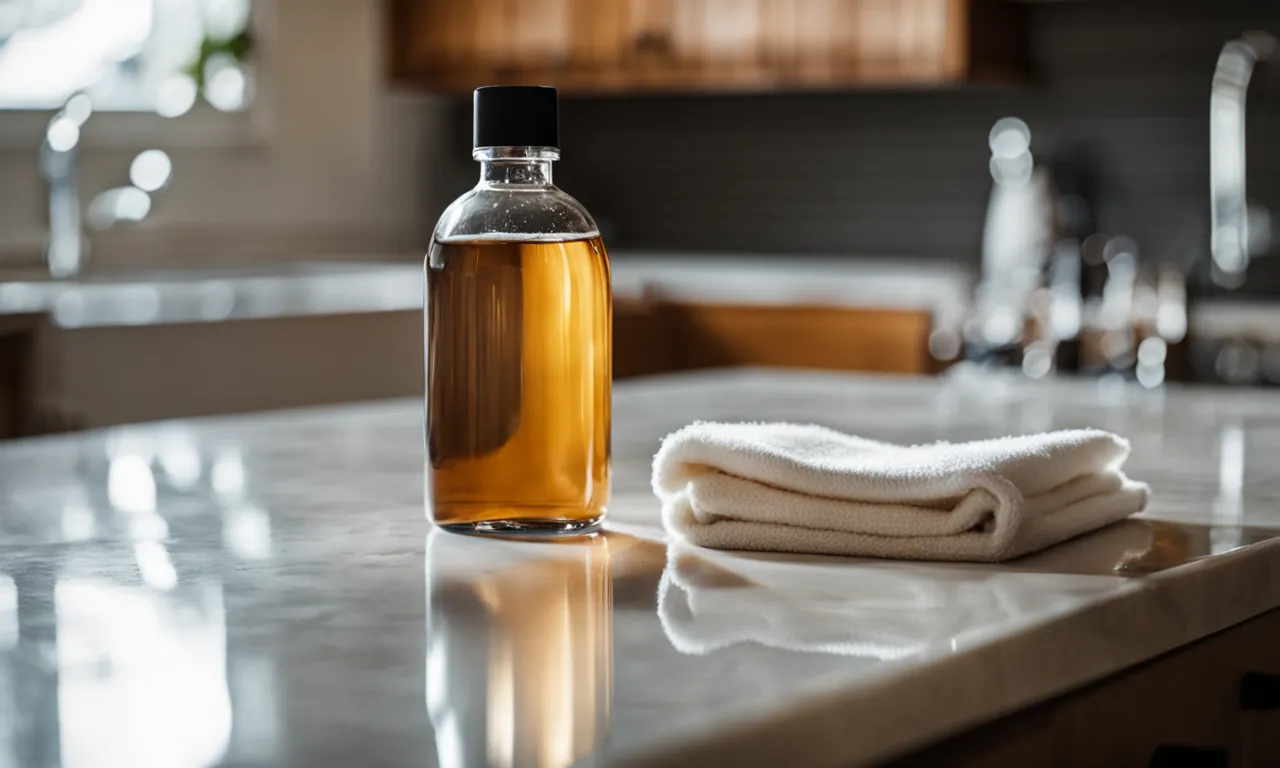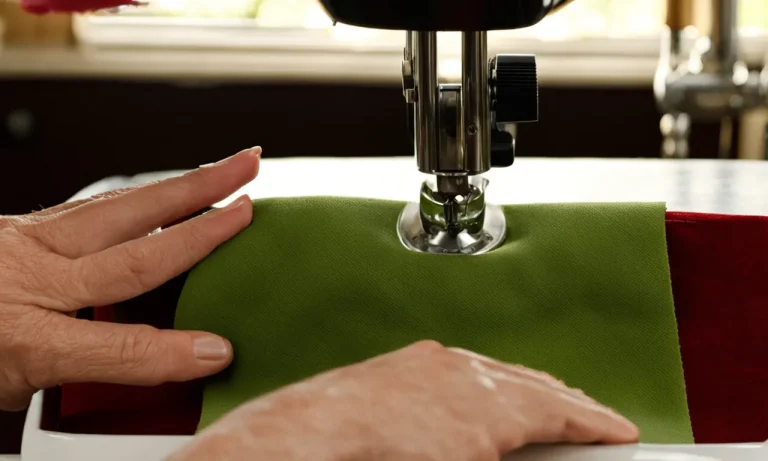How To Get Blood Out Of Fabric: A Complete Guide
Finding blood stains on your clothes or other fabrics can be alarming. Whether it’s from a small cut or nosebleed, blood stains can be tough to remove if you don’t act quickly.
If you’re short on time, here’s a quick answer to your question: soak the fabric in cold water as soon as possible, then pretreat with an enzyme detergent before washing with cold water.
In this comprehensive guide, we’ll cover everything you need to know about getting blood out of fabric. You’ll learn about different removal methods based on the fabric type, stain age, and settings. We’ll also provide step-by-step instructions for pretreating and washing blood stains.
Causes of Blood Stains on Fabric
Accidents happen, and sometimes blood stains end up on our favorite fabrics. Understanding the common causes of blood stains can help us tackle the problem effectively. Here are a few common causes:
Nosebleeds
Nosebleeds, while often harmless, can leave unsightly blood stains on clothing and fabrics. They can be caused by a variety of factors, such as dry air, allergies, injuries, or even certain medications.
If you or someone in your household is prone to nosebleeds, it’s a good idea to keep some stain removal techniques handy.
Cuts and Scrapes
Cuts and scrapes are another common cause of blood stains on fabric. Whether it’s a kitchen mishap or a small accident while playing sports, cuts and scrapes can quickly result in blood stains. It’s important to address these stains promptly to prevent them from setting into the fabric.
Menstrual Blood
For individuals who menstruate, menstrual blood can occasionally end up on clothing or other fabrics. While this is a natural process, it can be frustrating to deal with stains. Fortunately, there are several effective methods for removing menstrual blood stains, allowing you to save your favorite clothes.
It’s worth noting that regardless of the cause, prompt action is key when it comes to removing blood stains from fabric. The longer the stain sits, the harder it becomes to remove. So, don’t delay in treating these stains to increase your chances of success.
How to Remove Blood Stains Based on Fabric Type
Delicate Fabrics like Silk and Wool
Removing blood stains from delicate fabrics like silk and wool requires gentle handling to prevent further damage. Begin by blotting the stain with a clean cloth or paper towel to absorb as much blood as possible.
Avoid rubbing the stain, as it can cause the blood to spread and set deeper into the fabric.
Next, create a mixture of cold water and a mild detergent. Gently sponge the stain with the solution, being careful not to saturate the fabric. Rinse the area with cold water and repeat the process until the stain is no longer visible.
If the stain persists, consider using a specialized enzyme-based stain remover designed for delicate fabrics. Follow the instructions on the product carefully and test it on a small, inconspicuous area of the fabric before applying it to the stain.
Sturdy Fabrics like Cotton and Linen
Sturdy fabrics like cotton and linen are more forgiving when it comes to removing blood stains. Start by rinsing the stain with cold water to dilute and remove as much blood as possible. Avoid using hot water, as it can set the stain.
Next, create a paste using cold water and a laundry detergent or stain remover. Apply the paste to the stain and gently rub it in using a soft brush or your fingers. Let the paste sit on the stain for about 15 minutes, then rinse it off with cold water.
If the stain lingers, try using hydrogen peroxide. Dampen a clean cloth with hydrogen peroxide and blot the stain, being careful not to saturate the fabric. Rinse the area thoroughly with cold water and repeat the process if necessary.
Special Cases like Leather, Suede, and Upholstery
Removing blood stains from special fabrics like leather, suede, and upholstery requires a different approach. For leather and suede, start by blotting the stain with a clean cloth or paper towel to remove as much blood as possible.
Avoid rubbing the stain, as it can push the blood deeper into the material.
Next, create a solution of mild soap and water. Use a clean cloth to gently dab the stain with the solution, being careful not to oversaturate the fabric. Rinse the area with a clean cloth dampened with plain water and pat it dry.
For upholstery, it is best to consult a professional cleaner to ensure the stain is properly removed without causing any damage to the fabric. They have the necessary knowledge and equipment to handle delicate fabrics and remove stubborn stains effectively.
Remember, it is important to treat blood stains as soon as possible to increase the chances of successful removal. Always follow the care instructions provided by the fabric manufacturer and test any stain removal method on a small, inconspicuous area before applying it to the stain.
Pretreating Blood Stains
When it comes to removing blood stains from fabric, pretreating is essential to ensure successful stain removal. Here are some effective methods for pretreating blood stains:
Soak in Cold Water
One of the first steps in pretreating blood stains is to soak the fabric in cold water. Cold water helps prevent the blood from setting into the fabric fibers, making it easier to remove. Fill a basin or sink with cold water and gently submerge the stained fabric.
Let it soak for at least 30 minutes, or until you see the stain start to fade. Avoid using hot water, as it can cause the blood to coagulate and set the stain further.
Use an Enzyme Detergent
An enzyme detergent is specifically designed to break down protein-based stains like blood. Look for a laundry detergent that contains enzymes and follow the instructions on the label. Apply a small amount of the detergent directly to the blood stain and gently rub it in using a soft brush or your fingers.
Allow the detergent to sit on the stain for 10-15 minutes before moving on to the next step.
Make a DIY Pretreat Solution
If you don’t have an enzyme detergent on hand, you can create a DIY pretreat solution using common household items. Mix one part hydrogen peroxide with two parts cold water in a spray bottle. Spray the solution directly onto the blood stain and let it sit for 5-10 minutes.
Afterward, blot the stain with a clean cloth or paper towel, being careful not to rub the stain further into the fabric.
Remember, always test any pretreatment method on a small, inconspicuous area of the fabric first to ensure it doesn’t cause any damage or discoloration. If the stain persists after pretreating, it may be necessary to seek professional help or use a specialized stain remover.
Washing Blood Stained Clothes and Fabrics
Accidents happen, and sometimes that means dealing with blood stains on your clothes and fabrics. Whether it’s a small cut or a nosebleed, knowing how to effectively remove blood stains is essential. Here are some tips to help you wash blood stained clothes and fabrics:
Wash in Cold Water
When it comes to blood stains, using cold water is key. Hot water can actually set the stain and make it harder to remove. Instead, start by rinsing the stained area with cold water to remove as much blood as possible.
Then, soak the garment or fabric in a basin filled with cold water and a mild detergent. Let it soak for at least 30 minutes, and then gently rub the stained area to loosen the blood.
Air Dry Instead of Machine Drying
After you have washed the blood stained clothes or fabrics, avoid putting them in the dryer right away. Heat can further set the stain, making it more difficult to remove. Instead, air dry the item by laying it flat on a clean towel or hanging it up to dry.
This will allow any remaining stain to continue to loosen and fade.
Repeat Process if Needed
Sometimes, stubborn blood stains may require multiple attempts to completely remove. If the stain is still visible after the first wash, don’t panic. Simply repeat the washing process, paying extra attention to the stained area.
You can also try using a stain remover or pre-treating the stain with a mixture of hydrogen peroxide and dish soap before washing. Be sure to check the fabric care instructions before using any additional products, as some fabrics may be sensitive to certain chemicals.
Remember, prompt action is essential when it comes to removing blood stains. The longer the stain sits, the harder it becomes to remove. So, don’t delay in treating blood stains on your clothes and fabrics.
By following these tips and being proactive, you can effectively remove blood stains and restore your items to their original condition.
Removing Old or Set-In Blood Stains
Accidents happen, and sometimes that means dealing with stubborn blood stains on your favorite fabrics. Removing old or set-in blood stains may seem challenging, but with the right techniques, you can restore your fabric to its former glory.
Here are some effective methods to help you get rid of those pesky stains.
1. Use Meat Tenderizer
Meat tenderizer contains enzymes that help break down proteins, making it an excellent option for removing old or set-in blood stains. Start by dampening the stained area with cold water, then sprinkle some meat tenderizer onto the stain.
Gently rub the tenderizer into the fabric using a soft brush or sponge. Let it sit for about 30 minutes, then rinse with cold water. Repeat if necessary.
2. Try Hydrogen Peroxide
Hydrogen peroxide is a powerful and versatile stain remover. It acts as a natural bleach without causing discoloration to most fabrics. Before applying hydrogen peroxide, do a spot test on a small, inconspicuous area of the fabric to ensure it won’t cause any damage.
If the fabric is safe to treat, pour a small amount of hydrogen peroxide directly onto the stain and let it bubble. Blot the stain gently with a clean cloth and repeat the process until the stain disappears. Rinse the fabric thoroughly with cold water.
3. Make a Salt Paste
Salt is not only a common kitchen staple but also an effective stain remover. To make a salt paste, mix equal parts of salt and cold water until you achieve a thick consistency. Spread the paste onto the stained area, making sure to cover the entire stain.
Gently rub the paste into the fabric using a soft brush or sponge. Allow the paste to sit for at least 30 minutes, then rinse with cold water. Repeat the process if needed.
4. Consider Color Safe Bleach
If you’re dealing with stubborn blood stains on white or colorfast fabrics, color-safe bleach can be a great option. Follow the instructions on the bleach bottle, as different brands may have varying guidelines.
Generally, you’ll need to dilute the bleach with water and soak the fabric for a specific amount of time. After soaking, wash the fabric as usual and check if the stain is gone. Repeat the process if necessary, but be cautious not to use regular bleach on colored fabrics as it may cause discoloration.
Remember, it’s essential to act quickly when dealing with blood stains, especially if they are old or set-in. The longer the stain sits, the more challenging it becomes to remove. These methods should help you tackle those stubborn blood stains and save your favorite fabrics.
However, if the stain persists, it’s always a good idea to consult a professional cleaner for further assistance.
Conclusion
Dealing with blood stains in fabrics doesn’t have to be scary or frustrating. With the right techniques and cleaning agents, even old and set-in stains can be removed.
The key is to act fast – pretreat and soak the stain as soon as possible. Check fabric care labels and use cold water. For extra stubborn stains, break out the enzyme detergent, hydrogen peroxide or meat tenderizer.
With some patience and elbow grease, you can get out those nasty blood stains. Your clothes and fabrics will look good as new again.







